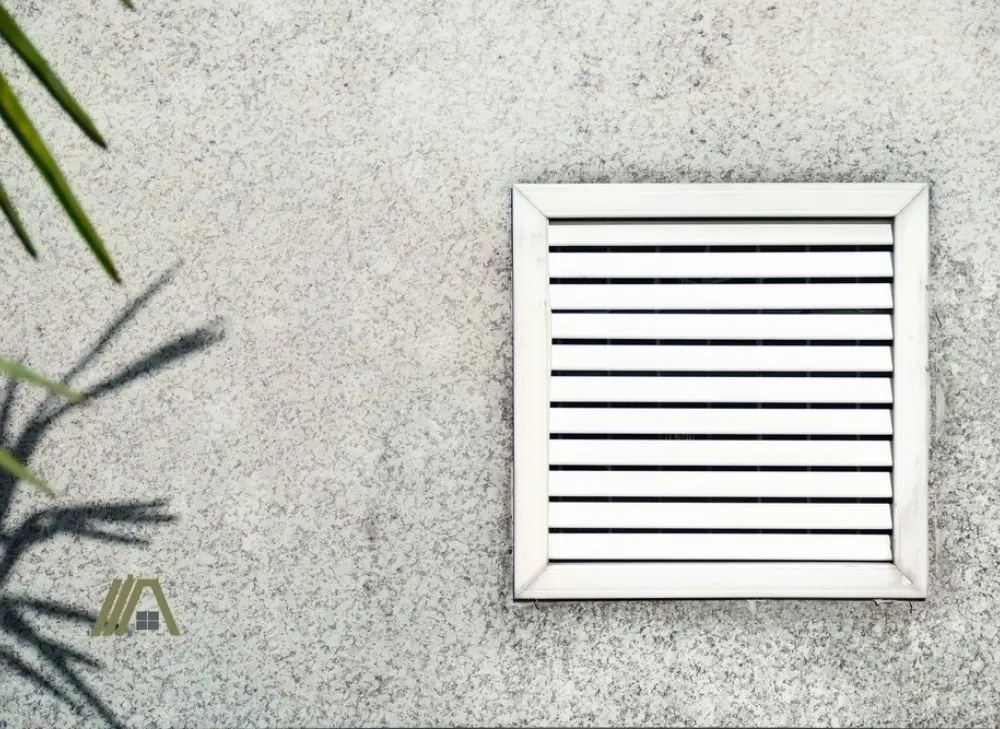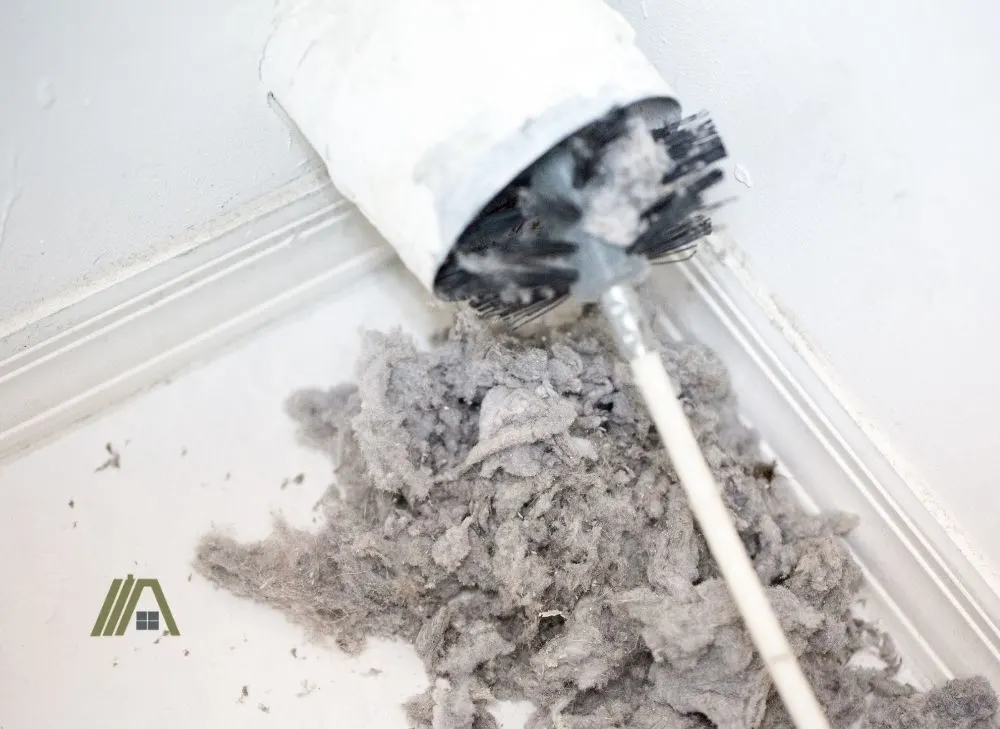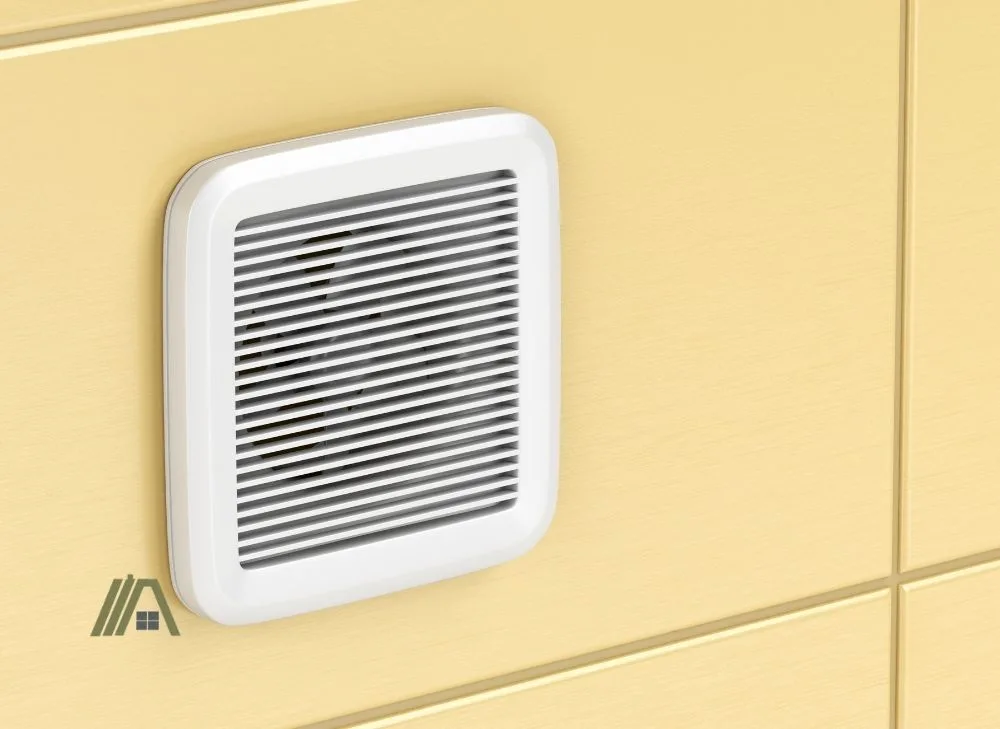Decks are a wonderful addition to a home but one factor that can thwart your plans is where your dryer exhaust vent is placed. You shouldn’t give up hope for a beautiful deck, though, since a dryer vent located under a deck is permitted and can be a viable option.
According to the International Residential Code (IRC), a dryer vent under a deck is technically allowed. As for how viable this option is, there are factors such as wood damage, dangerous winter conditions, and lint build-up that can occur when a dryer vent is under a deck, but this can be avoided.

Venting a non-gas dryer under a deck as allowed if the deck is high enough and unenclosed, the dryer is well-maintained, and the vent isn’t within 3 ft of air intakes/openings. Venting under the deck can warp the wood, make it hot to be on, melt snow into ice, collect lint, and grow mold.
Dryer Vent Termination Rules
When questioning the legality of this issue, the IRC is the best indicator. If its codes are being followed, it is likely that your home project is legal.

The IRC is adopted in 49 of the 50 United States, the District of Columbia, Guam, Puerto Rico, and the Virgin Islands. If you live in one of these areas, then the IRC will affect the way your home is constructed.
It is important to note that even if your venting complies with the IRC, it may not comply with your local codes. This is because the IRC is adapted for every state and area and these local codes take precedent over the international ones. So, it is important to check locally to see if the codes differ from the IRC.
As far as the guidance of the IRC on venting dryer exhaust under a deck, they do not specifically allow or disallow it.
According to Section M1502.3 of the IRC:
“Exhaust ducts shall terminate outside of the building…If the manufacturer’s instructions do not specify a termination location, the exhaust duct shall not terminate less than 3 feet (914 mm) in any direction from openings into buildings, including openings in ventilated soffits.”
The IRC would only expressly disallow the placement of a dryer vent under a deck is if the vent is within 3 feet of any openings or air intakes into your home. This would include windows, doors, furnace supply air intakes, etc.
As long as this is not the case, venting a dryer vent under a deck should be allowed by the IRC but local codes may say otherwise.
Do Not Vent a Gas Dryer Under the Deck
Before we go any further, I want to mention that you cannot vent your gas dryer under a deck. This is because gas dryer exhaust contains carbon monoxide from the combustion process.
This is incredibly dangerous to humans and pets and if your dryer is running while you are enjoying ice tea on your deck, you are exposing yourself to a toxic chemical.
If your deck has any sort of enclosing feature, like glass doors, or even canvas walls, then this is particularly dangerous as you are essentially venting the gas dryer indoors.
Issues With Venting a Dryer Under a Deck
Poor Airflow Under the Deck
Unfortunately, because of the deck’s location, the area under a deck is often not an ideal location for airflow.
Decks are often only a few feet off the ground, sometimes being enclosed fully or by a wooden lattice. All of these factors contribute to a lack of good airflow under your deck, especially if it is almost fully enclosed.
If you vent your dryer under a deck with poor airflow, the exhaust from your dryer will most likely remain under the deck instead of dispersing into the outside air. This could lead to moisture, hot air, and lint build-up under your deck, which can lead to various problems.
Warm, Moist Air Affects the Wood
If you have unsealed wood floors in your home, it is likely that you regard moisture and water spills as an enemy. In my home, we always have a mop around to clean up spills of water to protect our floors from warping.
Although decks are made to resist weather conditions, such as rain, and they surely don’t need mopping, high humidity and hot air directed onto your deck whenever the dryer runs is not an ideal situation.
Dryer exhaust is made up of evaporated water from the wet laundry load as well as heat and lint. If your dryer vent is under your deck, the hot air will preferentially rise to the wood of your deck. The heat and humidity of this exhaust are what present a danger to your deck.
Wood reacts to abrupt changes in temperature and humidity poorly. It can expand up to two inches in high humidity.
This expansion, especially in the winter where the temperature and humidity change is abrupt, can lead to damage to paint or sealant, creaks, strain, and, in extreme cases, breaks or cracks in your deck.
Deck Becomes Humid in Summer
Not only does this hot, humid exhaust pose a danger to the wood of your deck, but it can also be quite uncomfortable to those seated on your deck.

When there is insufficient airflow for the exhaust from your dryer to dissipate into the outside air, the hot and humid air is likely to gather and stay under the deck. It may remain here or it may, since hot air preferentially rises, rise through the gaps between the wooden planks and onto your deck.
This would mean that anyone on the deck at this time would experience the flowing of unpleasantly hot, humid air through the deck surface. This can be quite uncomfortable, especially on summer days that are already hot and humid.
Melted Snow Turns to Ice
Although this hot, humid air would be fairly unpleasant when sitting on your deck in the summer, during the winter or whenever there is snow, a different problem arises.
Air from dryer exhaust can be from 120-160℉ (50-71℃). This temperature is well beyond hot enough to melt accumulated snow on your deck.
Although melting snow may seem like a benefit of dryer exhaust rising through your deck, once the dryer has turned off, this melted snow will refreeze as ice. Ice is often more difficult to remove than snow and is far more dangerous to walk on.
This is especially true if the snow is melted, frozen, and then it snows again, covering this ice. If someone were to walk out onto the deck to shovel it, they would not be able to see the ice and would likely fall and could seriously injure themselves.
Lint Accumulating on the Deck
Although the hot and humid air of dryer exhaust has mainly been focused on thus far, dryer exhaust also contains lint.

This lint would most likely gather under your deck if there is insufficient ventilation and could even rise through your deck and accumulate on your deck’s surface.
Lint accumulation would be a bother to clean up and would also pose a fire hazard to your deck and possibly your home.
This is especially true if you grill on your deck or have a fire table. This fire could harm anyone nearby, your deck, and your home if the fire spreads enough.
Potential for Mold Growth
Not only does humid air bring discomfort and potential wood damage, but it also creates an ideal environment for mold growth.
Mold is an unpleasant sight, but it is also difficult to remove and can cause allergy symptoms and asthma attacks.
A deck is often a place for gathering, whether this includes the family or a whole party of people. Your deck’s appearance can be tarnished by the sight of black mold creeping along the wooden planks, and can lead to a lot more pre-party chores if you’d like to get rid of it.
If the mold below and above your deck becomes a problem that only a professional can deal with, then you will end up having to pay, quite literally, for your choice of dryer venting.
Even if the mold can be removed or is in smaller amounts, even the smallest amounts can trigger allergy symptoms and cause asthma attacks.
Conditions Under Which It May Work
Despite all of these cons, with a tall and robust deck that is subject to regular maintenance and with a regular dryer vent cleaning schedule, venting dryer exhaust under your deck can work with limited consequences.
At least you don’t have the odor issues that would be present if you were trying to vent a bathroom fan under your deck!

A deck made of treated lumber and fasteners (and/or protected by joist tape) would be well-protected from humid and wet conditions that would be generated by dryer exhaust. The wood would be much less likely to warp or break, although it is not indestructible.
Regular deck maintenance such as cleaning would inhibit or limit the growth of mold under and above your deck.
A deck that is at least 20″ from the ground, as long as it wasn’t encased, would provide for better airflow under the deck. This height would not limit hot, humid, lint-filled air from rising and collecting and would also limit the growth of mold. Instead, the air would be dispersed out from under the deck.
A non-encased deck would also allow for better airflow and access under the deck. With this access available, you would be able to clean your ducts at least every twelve months. This would limit lint build-up and lessen the risk of fires.
